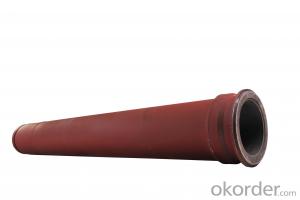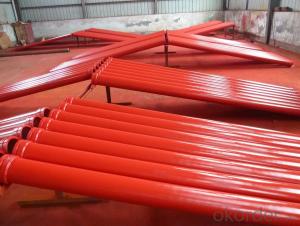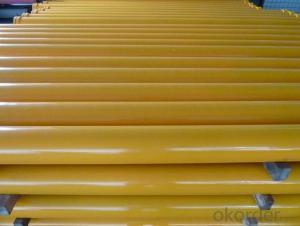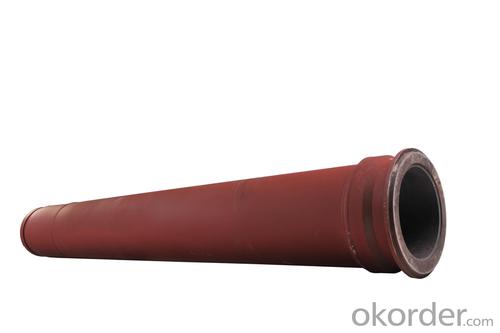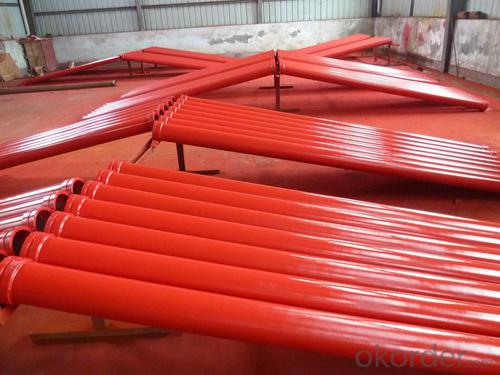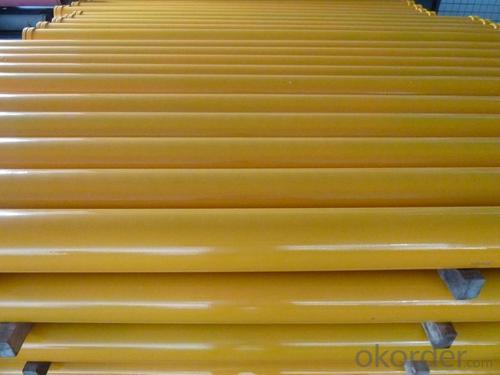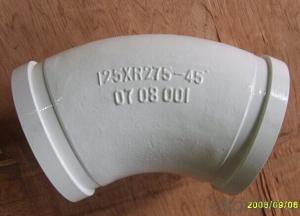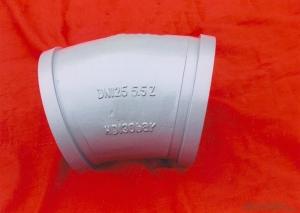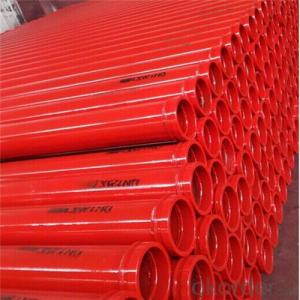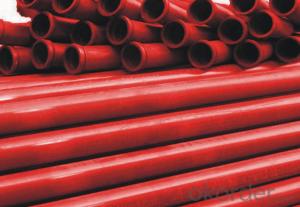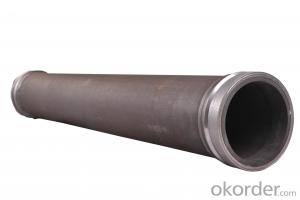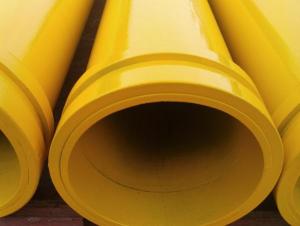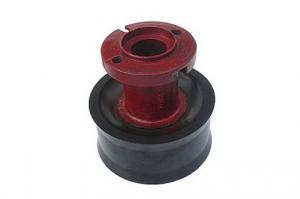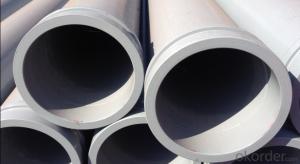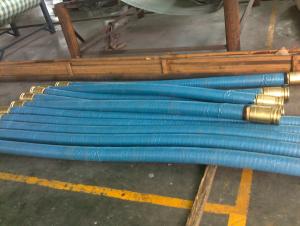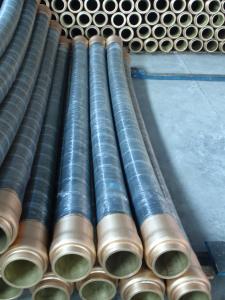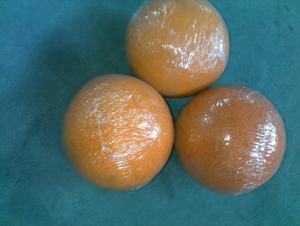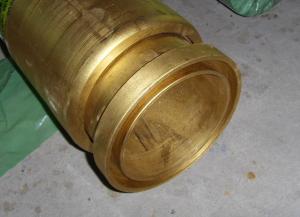Twin Wall Pipe for Concrete Pump Pipe Thickness 4.5mm Length 3000mm
- Loading Port:
- Tianjin
- Payment Terms:
- TT or LC
- Min Order Qty:
- 50 pc
- Supply Capability:
- 2000 pc/month
OKorder Service Pledge
OKorder Financial Service
You Might Also Like
Product Description:
Product Name: Twin Wall Pipe for Concrete Pump Pipe Thickness 4.5mm Length 3000mm
1. Specification
Wall thickness: inner wall is 2.5 mm 65Mn, outer wall is 2mm seamless steel
Length: 3000&2000&1000mm with wear resistant SK flange
Type: Double / twin wall
Hardness: HRC 63
Using life: 60,000-100,000(CBM)
Highlights: longest using life
Welding: Smooth welding between straight pipes and flanges
Color : as customer's requirement,usually bule or red
Surface: Electrostatic Spraying Epoxy Paint
3. Application
Concrete delivery.
4. Package
Put into containers.
FAQ:
Q1: Why buy Materials & Equipment from OKorder.com?
A1: All products have its ISO certifications, adheres to the highest standards and a commitment to supply chain safety and customer satisfaction.
Q2: How do we guarantee the quality of our products?
A2: We have established an advanced quality management system which conducts strict quality tests at every step, from raw materials to the final product. At the same time, we provide extensive follow-up service assurances as required.
Q3: How soon can we receive the product after purchase?
A3: Within three days of placing an order, we will begin production. The specific shipping date is dependent upon international and government factors, but is typically 10 to 30 workdays.
Q4: If we can produce Twin Wall Pipe for Concrete Pump Pipe Thickness 4.5mm Length 3000mm according to customers request?
A4: Yes, we can produce T Twin Wall Pipe for Concrete Pump Pipe Thickness 4.5mm Length 3000mm according to the difference country situations to make it suitable to the market and customers. We have very professional technical team to make the design.
Q5: How to make a quick resolution for after service?
A5: We have overseas branches all-around of world, If needed, the seller shall dispatch 2 engineers to the buyer's site for supervision of training. The buyer shall make available of necessary facilities &skilled personnel at site for training.
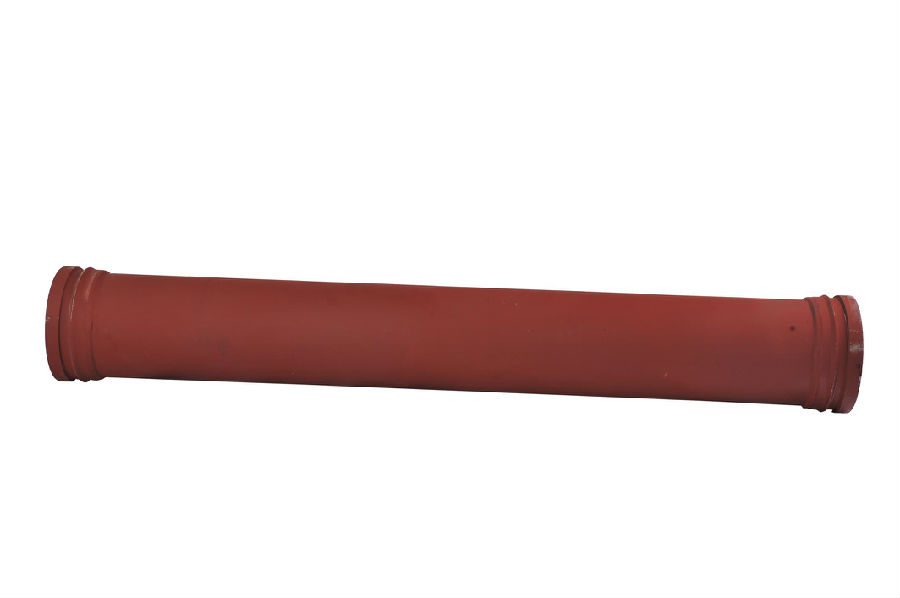
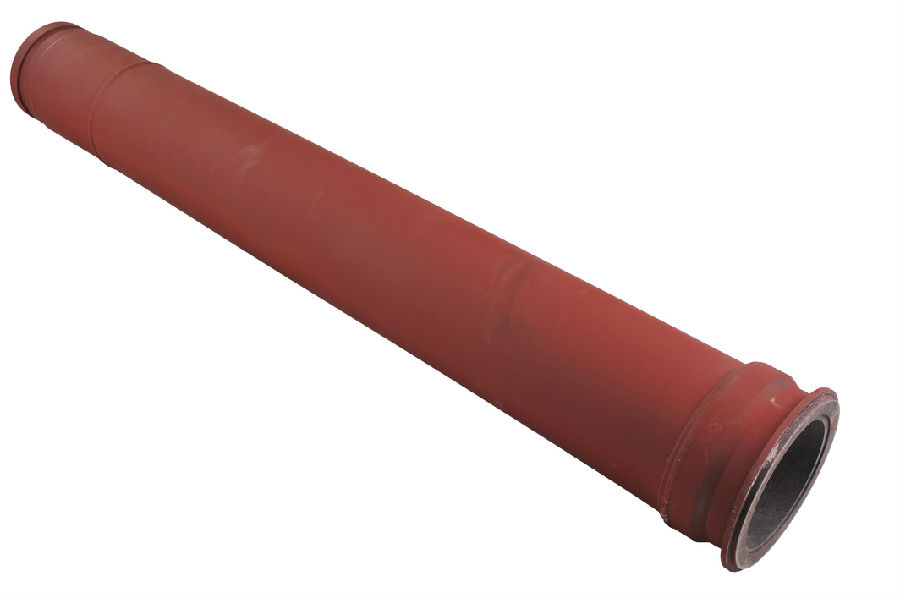
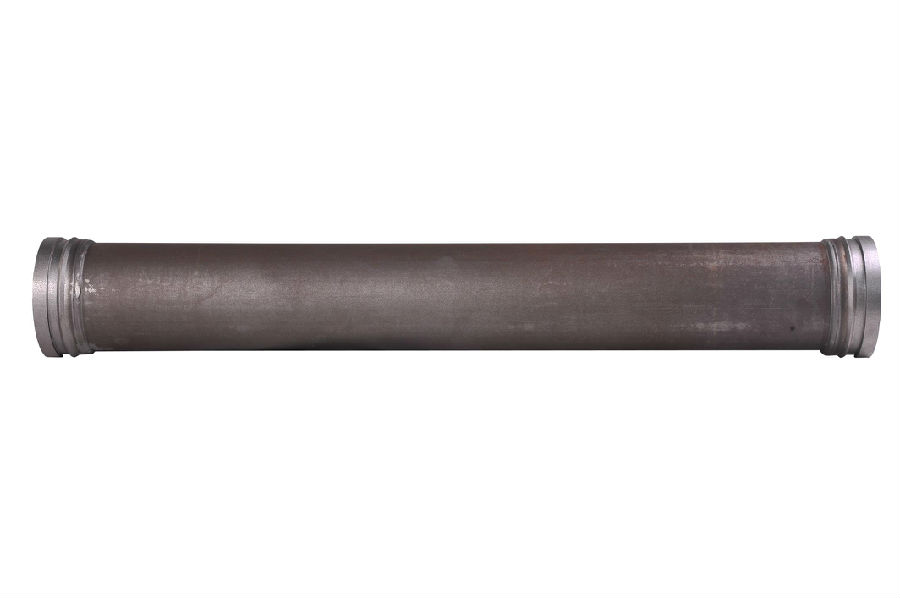
- Q: Are there any safety considerations when using concrete pump spare parts?
- Concrete pump spare parts should be used with caution and with a focus on safety. High-quality parts that are compatible with the specific make and model of the pump are crucial. Using substandard or incorrect parts can lead to equipment failure, posing a danger to the operator and those nearby. Regular maintenance and inspection of the spare parts are also essential for safety. Checking for signs of wear or damage on a regular basis can help prevent accidents and equipment failure. It is vital to follow the manufacturer's guidelines for maintenance and replacement intervals. Adhering to safety procedures and protocols is a must when using concrete pump spare parts. This includes wearing appropriate personal protective equipment, such as safety goggles, gloves, and steel-toed boots. It is equally important to ensure that all operators receive proper training on equipment usage and understand the potential hazards involved. Safe operating practices are paramount when working with concrete pump spare parts. Maintaining a safe distance from the work area, ensuring the stability and security of the pump, and avoiding overloading or exceeding the recommended operating capacity are all crucial. By taking these safety considerations into account and following proper procedures, the risks associated with using concrete pump spare parts can be minimized. This ensures the safety of operators and workers on construction sites.
- Q: What is the function of a concrete pump hopper agitator shaft bearing?
- The function of a concrete pump hopper agitator shaft bearing is to provide support and facilitate smooth rotation of the agitator shaft, ensuring effective mixing of the concrete in the hopper.
- Q: How often should hopper cylinders be inspected or replaced in a concrete pump?
- Hopper cylinders in a concrete pump should be inspected regularly to ensure optimal performance and prevent potential malfunctions. The frequency of inspections and replacements depends on several factors, including the intensity of usage, the type of concrete being pumped, and the overall condition of the equipment. As a general guideline, it is recommended to inspect hopper cylinders at least on a monthly basis or after every 100 hours of operation, whichever comes first. During these inspections, the cylinders should be thoroughly examined for any signs of wear, corrosion, or damage. Additionally, the seals, gaskets, and other components connected to the cylinders should be checked for proper functioning. However, it is important to note that the inspection frequency may need to be increased if the concrete being pumped contains abrasive materials or if the pump is being used in harsh environmental conditions. In such cases, more frequent inspections and replacements may be necessary to avoid unexpected breakdowns and costly repairs. Ultimately, the goal is to maintain the hopper cylinders in good condition and address any issues promptly. Regular inspections, along with routine maintenance and proper cleaning, can significantly prolong the lifespan of the cylinders and ensure the concrete pump operates efficiently and safely.
- Q: Are there any specific tools required for replacing concrete pump spare parts?
- Yes, there are specific tools required for replacing concrete pump spare parts. Some of the common tools include wrenches, socket sets, screwdrivers, pliers, hammers, and pry bars. Additionally, specialized tools such as concrete pump piston pullers, gasket cutters, and sealant applicators may also be necessary depending on the specific parts being replaced. It is important to have the right tools to ensure safe and efficient replacement of concrete pump spare parts.
- Q: How often should hopper agitator shafts be inspected or replaced in a concrete pump?
- Hopper agitator shafts in a concrete pump should be inspected regularly, ideally during routine maintenance checks, to ensure they are in proper working condition. The frequency of inspections may vary depending on the usage and operating conditions of the concrete pump. However, a general recommendation would be to inspect or replace hopper agitator shafts at least once every 6 to 12 months to prevent any potential issues or malfunctions.
- Q: How often should hopper cylinder seals be replaced in a concrete pump?
- Hopper cylinder seals in a concrete pump should be replaced as soon as signs of wear or damage are observed. Regular inspection and maintenance can help identify the need for replacement, but the frequency ultimately depends on factors like usage, environmental conditions, and the quality of the seals. It is recommended to follow the manufacturer's guidelines and consult with professionals to determine the appropriate replacement schedule for hopper cylinder seals in a concrete pump.
- Q: What are the precautions for gas washing of concrete pump?
- If it is found that the wash is not moving, it should first close the intake valve, and then slowly open the exhaust valve bleeding, and then try to segment cleaning.
- Q: How is the piping of the concrete pipe designed?
- Concrete transmission pipe, according to the project and construction site characteristics, concrete pouring plan piping. Should shorten the length of the pipeline, less elbow and hose. The laying of the transmission pipe shall ensure safe construction, easy cleaning of the pipeline, troubleshooting and installation and maintenance
- Q: What is the purpose of a concrete pump piston?
- The concrete pump piston serves to apply the essential pressure needed to propel the concrete mixture from the hopper and into the delivery pipeline. Its main responsibility is to generate the force necessary to propel the concrete throughout the system, effectively transporting it to the desired location. This is accomplished through the reciprocating movement of the piston, which creates suction on one side and pressure on the other, allowing the concrete to advance. In summary, the concrete pump piston plays a vital role in enabling the smooth and uninterrupted flow of concrete, making it an indispensable element in construction endeavors that demand accurate and timely concrete placement.
- Q: What are the advantages of using OEM (Original Equipment Manufacturer) concrete pump spare parts?
- Using OEM (Original Equipment Manufacturer) concrete pump spare parts offers several benefits: 1. Quality Assurance: OEM spare parts are made by the same company that produces the original equipment, ensuring that they meet the same high-quality standards as the original components. By using OEM parts, the concrete pump will perform optimally with minimal risk of breakdowns or failures. 2. Compatibility: OEM spare parts are specifically designed to fit perfectly with the original equipment. They are built to exact specifications and dimensions, allowing for seamless integration with the concrete pump. This compatibility ensures proper and efficient functioning of the parts. 3. Reliability: OEM spare parts undergo extensive testing by the manufacturer to ensure their reliability and durability. This reduces the likelihood of premature failure or wear, resulting in reduced downtime and maintenance costs. The reliability of OEM parts also minimizes the risk of accidents or injuries caused by faulty equipment. 4. Warranty Coverage: Many OEM spare parts come with a manufacturer warranty, providing protection against defects or failures. This warranty gives customers peace of mind and assurance that they are investing in high-quality components. In case of any issues, the manufacturer typically provides support and assistance. 5. Technical Support: OEM manufacturers usually offer technical support and assistance to customers using their spare parts. This support is invaluable for troubleshooting issues, providing guidance on installation or maintenance, and optimizing the performance of the concrete pump. Non-OEM parts may not offer the same level of support. 6. Long-Term Cost Savings: While OEM spare parts may have a higher upfront cost compared to non-OEM alternatives, they often prove to be more cost-effective in the long run. Their superior quality and reliability result in fewer breakdowns, reduced maintenance expenses, and extended equipment lifespan. Using OEM parts also helps maintain the resale value of the concrete pump. In conclusion, the advantages of using OEM concrete pump spare parts include quality assurance, compatibility, reliability, warranty coverage, technical support, and long-term cost savings. By choosing OEM parts, users can ensure smooth and efficient operation of their concrete pump while minimizing risks and maximizing their investment's return.
Send your message to us
Twin Wall Pipe for Concrete Pump Pipe Thickness 4.5mm Length 3000mm
- Loading Port:
- Tianjin
- Payment Terms:
- TT or LC
- Min Order Qty:
- 50 pc
- Supply Capability:
- 2000 pc/month
OKorder Service Pledge
OKorder Financial Service
Similar products
Hot products
Hot Searches
